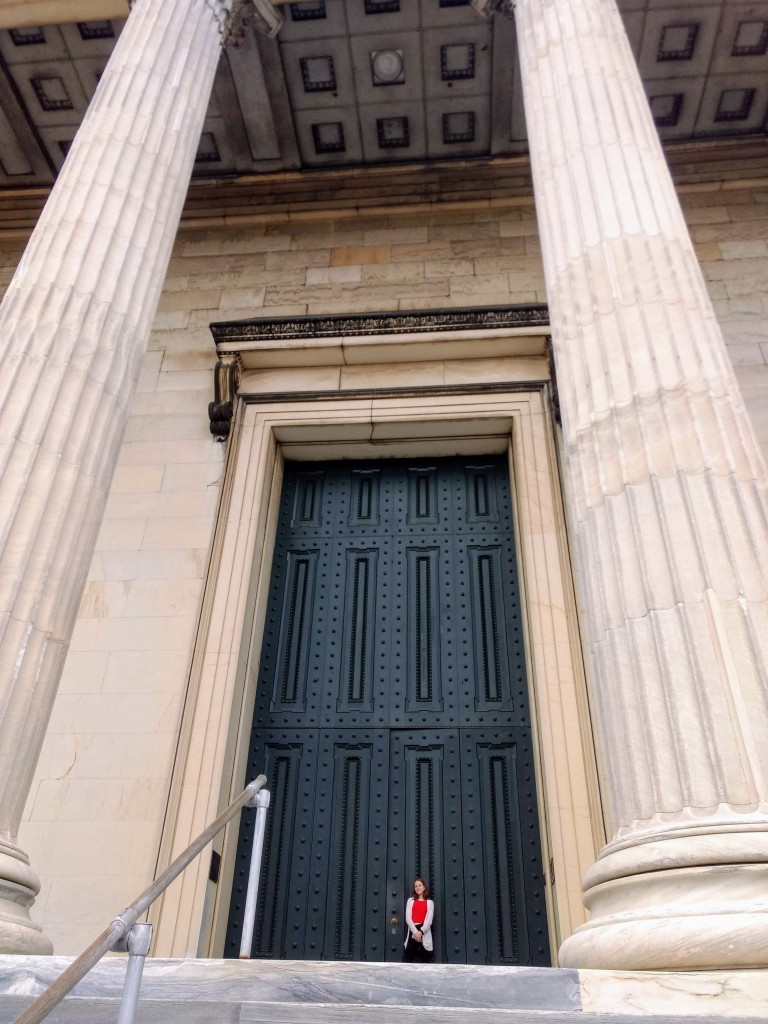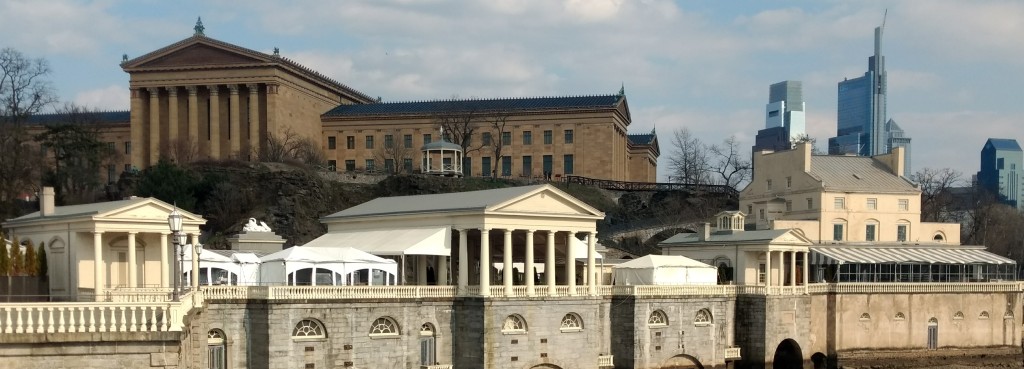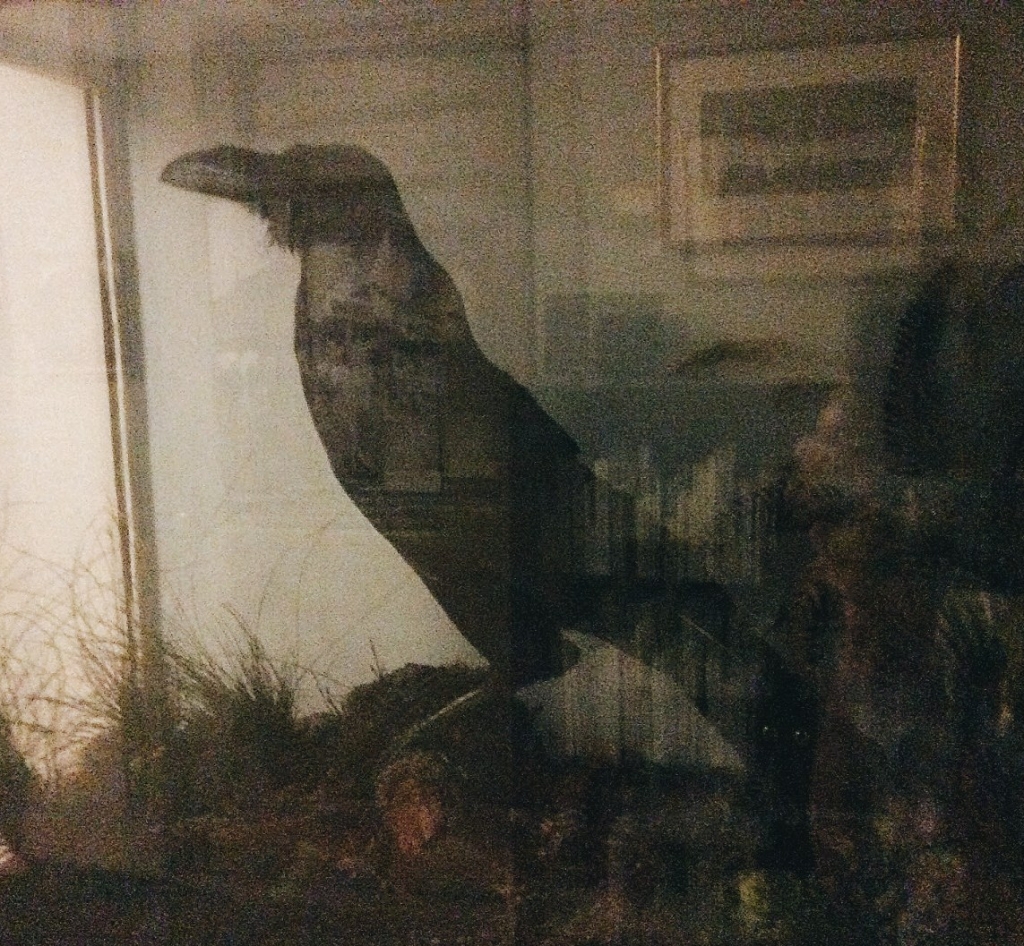Although, in its defense Dickens was not impressed with much about America during his 1842 visit (as described in his book “American Notes”). Dickens had high hopes for the republic, but not much about the country lived up to his expectations (although that didn’t keep him from making a return trip in 1867, where his fame and public readings earned him quite a lot of money-about $2,000,000 in today’s currency).
Compared to New York and Boston, Dickens found Philadelphia “handsome” but “provincial,” with streets too “distractingly regular.“ “After walking about it for an hour or two, I felt I would have given the world for a crooked street.” Poor William Penn, who designed Philadelphia with its rectangular street grid and brick houses as a response to the winding streets and wooden houses that made London such a fire hazard.

From his hotel on Chestnut Street, Dickens looked out on the “mournful, ghost-like” facade of the recently shuttered Second Bank of the United States (https://secretsofphiladelphia.com/2018/09/14/putting-faces-to-the-revolution-the-portrait-gallery-at-independence-park/). During his stay here, he met with then Philadelphia resident Edgar Allan Poe, who was a great admirer of Dickens (although Dickens doesn’t mention the encounter in his book – probably because Poe was a virtual unknown at this point and one of about a gazillion people who wanted to meet the famous writer).

He also viewed the “splendid,” though unfinished, building of Girard College – although, he did make a snarky comment that “like so many other great undertakings in America, even this is rather going to be done one of these days, than doing it now.“ (from 1833-44 the estate was tied up in court, with Girard’s relatives arguing that they should inherit the money, not have it go towards building a school for ”poor, white, male orphans” as designated in the will -a legal battle similar to those Dickens observed during his employment as a court reporter and wrote about frequently)(https://secretsofphiladelphia.com/2018/09/21/yellow-fever-civil-rights-and-the-richest-man-in-america-the-stephen-girard-collection/)

Dickens was impressed with his visit to the waterworks, which he found both “useful” and “ornamental,” “being tastefully laid out as a public garden, and kept in the best and neatest order.” His description of the water itself, being “showered and jerked about, and turned on, and poured off” is pure Dickens.(https://secretsofphiladelphia.com/2018/04/07/philadelphias-waterworks-a-free-museum-and-secret-sculpture-garden/)

He was also impressed with his visit to the “most excellent” Pennsylvania Hospital and his viewing of the massive “Christ Healing the Sick,“ by Benjamin West, and found it “as favorable a specimen of the master as can be seen anywhere.” Although in typical sarcastic fashion added, “Whether this be high or low praise, depends on the reader’s taste.”(https://secretsofphiladelphia.com/2018/07/22/an-inside-look-at-americas-oldest-hospital-the-oldest-existing-operating-theater-in-the-world/)

Most of the chapter on Philadelphia is reserved for his condemnation of Eastern State Penitentiary and its philosophy of solitary confinement. Dickens was well acquainted with prisons (in his youth, his father was imprisoned for several months in London’s Marshalsea Prison for debt) and visited several during his stay in America. It was the solitary isolation that disturbed Dickens the most, and after talking to several prisoners, declared the system “cruel and wrong.” Echoes of his time spent at Eastern State shows up in the prison scenes of his 1859 novel, “A Tale of Two Cities.” (https://secretsofphiladelphia.com/2018/09/14/solitary-confinement-al-capone-and-flush-toilets-exploring-phillys-cutting-edge-for-1821-eastern-state-penitentiary/)

Other Philadelphia sites for Dickens fans include the Free Library (https://secretsofphiladelphia.com/2018/04/05/kathys-favorite-secret-philadelphia-museum-the-rare-book-department-at-the-free-library/)

and (if visiting around the holidays) the Dickens Village at Macy’s, with its animatronic Dickens and recreation of “A Christmas Carol.” (https://secretsofphiladelphia.com/2019/01/07/christmas-in-philly/).

Once the only sculpture of Dickens in the world, this c. 189O bronze likeness of Dickens and Little Nell now stands in Clark Park (West Philadelphia) after wandering the world homeless for many years. In his will, Dickens forbade any “monument, memorial or testimonial, whatever. I rest my claims to remembrance on my published works and to the remembrance of my friends upon their experiences of me.” So, after an unsuccessful visit to London to look for a buyer, the sculpture ended up in a warehouse in Philadelphia for several years. Eventually, it was purchased by the Fairmount Park Art Association, who put it on display in its current location.


Well, I’m not a fan of Dickens, so there. Actually, I have mixed feelings about Dickens – I do find his books interminable, and the man himself seemed like kind of a jerk, but when I think about it, I’m probably the same kind of a jerk (snarky, always complaining), so maybe I shouldn’t be so quick to judge Dickens. I do like Philly though!
LikeLiked by 1 person
I definitely get the feeling that you and he might have enjoyed a good snark session! I’m not a big Dickens fan (though I wish I were, so I keep trying), but it is really interesting reading his impressions of America. Even when he said something nice, he followed it up with an uncomplimentary aside. On a side note Miriam Margolyes did a BBC documentary following Dickens’s path through America. She is hysterical!
LikeLiked by 1 person